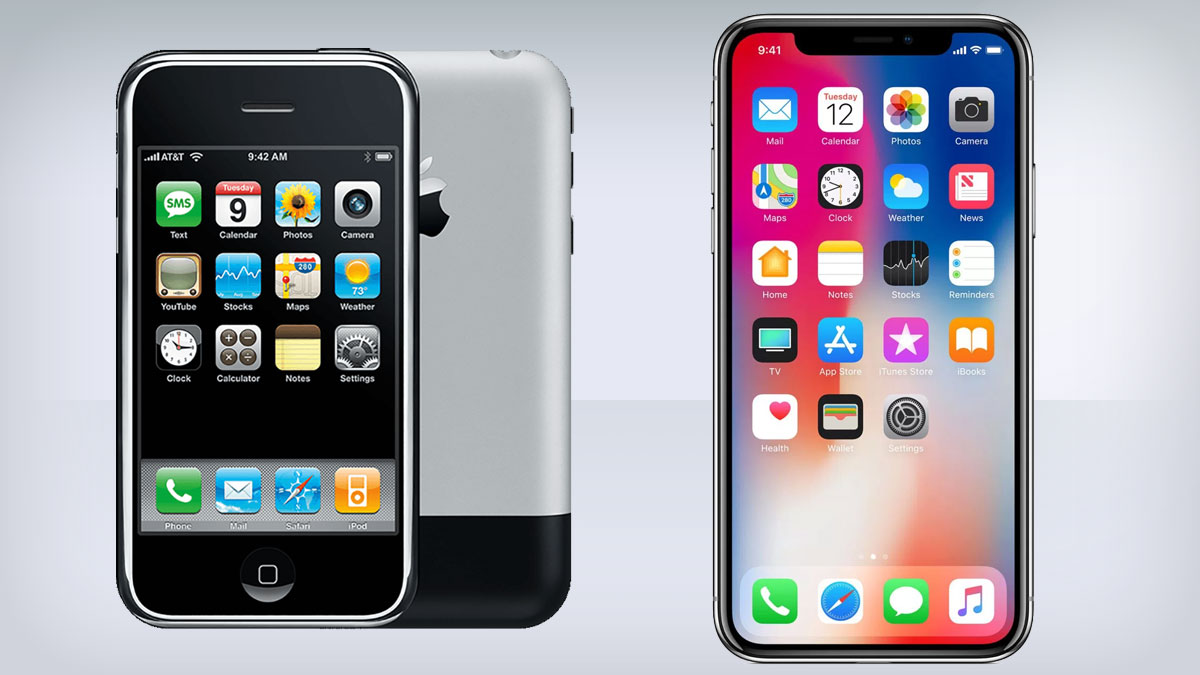How the iPhone has changed through the years

Apple has had a rare stumble, with iPhone sales and revenue both declining in its last fiscal quarter.
As Apple CEO Tim Cook has hinted that the company could lower iPhone prices to help bolster sales, it’s instructive to review how the iPhone changed since its introduction and reached its current price point over more than a thousand pounds.
iPhone 2G
Apple introduced the first-generation iPhone in June 2007. Apple called it the iPhone 2G because it only worked with the 2G data network rather than the faster 3G network. The 4GB model of the 2G retailed at £381, while the 8GB model retailed at £457.
iPhone 3G and 3GS
In July 2008, Apple released the second-generation iPhone 3G. The handset only cost consumers £99 with a two-year mobile service contract. The handset featured iOS 2.0 software, multimedia messaging (MMS), and copy and paste functions.
In mid-2009, Apple released its faster third-generation iPhone 3GS, with the S standing for speed.
iPhone 4 and 4S
In June 2010, Apple unveiled the fourth-generation iPhone 4. Then-CEO Steve Jobs called it the world’s thinnest smartphone, and it featured a front-facing camera that enabled FaceTime video chat. The 16GB model of the iPhone 4 retailed at £499, while the 32GB model retailed at £599.
Apple released its fifth-generation iPhone 4S in October 2011, when voice-assistant Siri made its first appearance.
iPhone 5, 5C and 5S
The company released the iPhone 5 in September 2012. It was 4G-enabled and was lighter, thinner and had a taller screen than its preceding models. Apple priced the 16GB model at £529, the 32GB model at £599 and the 64GB model at £699.
In 2013, Apple replaced the iPhone 5 with the iPhone 5C and 5S.
iPhone 6, 6 Plus, 6S and 6S Plus
In September 2014, Apple released the iPhone 6 and 6 Plus. The 6 featured a 4.7-inch display, while the 6 Plus featured a 5.5-inch display. The iPhone 6 retailed at £539. This generation featured increased battery life, an upgraded camera and the introduction of Apple Pay.
Apple replaced the iPhone 6 and 6 Plus with the 6S and 6S Plus almost a year later.
iPhone 7 and 7 Plus
The company released the iPhone 7 and 7 Plus in September 2016. Prices for the 7 started at £549, while the 7 Plus started at £669. Both models came in 32GB and 128GB versions and featured an improved 12-megapixel camera, water-resistant technology and the removal of the headphone jack.
iPhone 8 and 8 Plus
Apple released the iPhone 8 and 8 Plus in September 2017. The company replaced the aluminium case of the iPhone 7 with an all-glass design.
Prices for the 64 GB version of the 8 started at £699, while prices of the 64GB version of the 8 Plus started at £799.
iPhone X
To mark the tenth anniversary of the iPhone, the company released the iPhone X in November 2017.
This generation featured an OLED display, a 5.8-inch screen, the removal of the home button and wireless charging. Prices for the X started at £999.
iPhone XR, XS and XS Max
In September 2018, Apple introduced the iPhone XR, XS and XS Max. The XR retails at £749, while the most expensive XS Max retails at £1,449.
